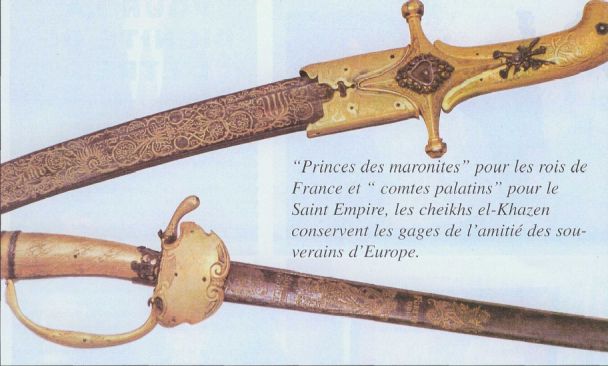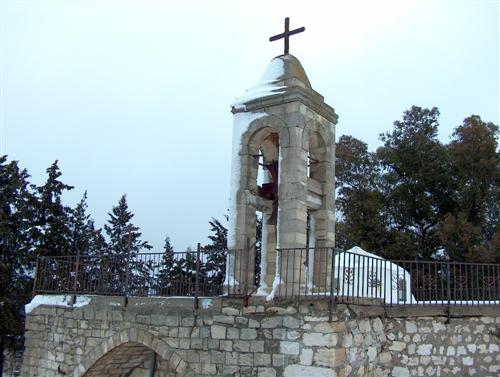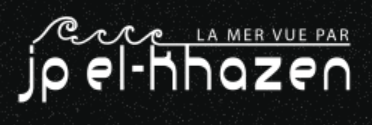The Special Tribunal for Lebanon on Tuesday released a media advisory reminding that its Trial Chamber will hold sessions on …
اجتاح الزجاج القاتم قصر الرئاسة اللبنانية أمس. لم تكن سيارات الرئيس سعد الحريري ورئيس حزب القوات اللبنانية سمير جعجع بين …
Lebanese abductee Suleiman al-Ahmed was released by Syrian authorities on Tuesday and returned to the northern town of Wadi Khaled, where …
Lebanese number of Viewers per TV Brand s& Lebanese media background LBC – NTV MTV Future OTV NBN TL
Normal 0 false false false EN-US X-NONE X-NONE MicrosoftInternetExplorer4 /* Style Definitions */ table.MsoNormalTable {mso-style-name:"Table Normal"; mso-tstyle-rowband-size:0; mso-tstyle-colband-size:0; mso-style-noshow:yes; mso-style-priority:99; mso-style-qformat:yes; mso-style-parent:""; mso-padding-alt:0in 5.4pt 0in 5.4pt; mso-para-margin-top:0in; mso-para-margin-right:0in; mso-para-margin-bottom:10.0pt; mso-para-margin-left:0in; line-height:115%; mso-pagination:widow-orphan; font-size:11.0pt; font-family:"Calibri","sans-serif"; mso-ascii-font-family:Calibri; mso-ascii-theme-font:minor-latin; mso-fareast-font-family:"Times New Roman"; mso-fareast-theme-font:minor-fareast; mso-hansi-font-family:Calibri; mso-hansi-theme-font:minor-latin;}
By Habib Battah
Average Daily Viewership Share in Lebanon
LBC 38.4%
Jadeed: 35 %
MTV 28.7%
OTV 25.4%
Future 16.7%
NBN 12.3%
Manar 12%
TL: 11.6%
Future News: 10.9%
*Source: IPSOS STAT Beirut
The television drama unfolding across the Middle East has gripped Lebanese audiences the same as any Arab country. But while the images of upheaval broadcast over the last year have ignited a fury that has gone viral, ejecting viewers off the couch and onto the streets in one city after another, Lebanon remains relatively quiet, seemingly immune from the contagion of revolution. As the walls of fear crumble around them, the country’s decades-old leaders are as entrenched as they have ever been. One major reason why change has so far eluded Lebanon can be attributed to the nascent, if not enabling role played by the country’s news media or lack thereof.
While Beirut is often lauded for having the freest and most vibrant television landscape in the region, the reality is that most Lebanese stations produce very little journalism. And ironically, the Lebanese are spoiled for choice with a whopping eight local TV news organizations--roughly the equivalent number of stations serving Los Angeles, which is more than double Lebanon’s population. It’s not that Lebanese channels face the kind of government interference present in most Arab states, where networks of stations are state-owned, and thus limited to a monolithic regurgitation of platitudes. In fact, Lebanon’s sole government-held broadcaster is woefully unpopular and the privately-owned stations convey such diametrically opposed views of reality that even the concept of breaking news is disputed. Major political speeches, visits by foreign heads of state and even explosions are carried live by some and dismissed as unimportant by others who may refuse to interrupt a regular programming slot of cartoons or soap operas.
Neither are local stations particularly friendly to authority. Local channels parody and vilify Lebanese leaders with abandon, even adding music and special effects. Everyone has a laugh and yet little changes. Of course viewers know that most Lebanese ‘news’ channels openly function as audiovisual instruments of the political machines that sponsor them: Al Manar is Hezbollah’s “beacon” of resistance, Orange TV proudly doses itself in the colors of former general Michel Aoun’s orange movement and Future News is little more than a communications wing of Saad Hariri’s Future movement. Yet despite its newly refurbished multi-million dollar glass studios, encapsulated in futuristic corten steel panels, it is now the most unpopular channel in Lebanon according to figures obtained by Ipsos. At a 10.9 percent average daily viewership, Future News trails closely behind state broadcaster Tele Liban at 11.6 percent and Al Manar at 12 percent. Perhaps encouragingly, Lebanon’s top three performers-- LBC at 38.4 percent, Al Jadeed at 35 percent and MTV at 28.7 percent-- do not claim to directly represent a political party or particular politician. But they’re not doing much better job at informing audiences.
Khazen History


Historical Feature:
Churches and Monasteries of the Khazen family

St. Anthony of Padua Church in Ballouneh
Mar Abda Church in Bakaatit Kanaan
Saint Michael Church in Bkaatouta
Saint Therese Church in Qolayaat
Saint Simeon Stylites (مار سمعان العامودي) Church In Ajaltoun
Virgin Mary Church (سيدة المعونات) in Sheilé
Assumption of Mary Church in Ballouneh
1 - The sword of the Maronite Prince
2 - LES KHAZEN CONSULS DE FRANCE
3 - LES MARONITES & LES KHAZEN
4 - LES MAAN & LES KHAZEN
5 - ORIGINE DE LA FAMILLE
Population Movements to Keserwan - The Khazens and The Maans
ما جاء عن الثورة في المقاطعة الكسروانية
ثورة أهالي كسروان على المشايخ الخوازنة وأسبابها
Origins of the "Prince of Maronite" Title
Growing diversity: the Khazin sheiks and the clergy in the first decades of the 18th century
Historical Members:
Barbar Beik El Khazen [English]
Patriach Toubia Kaiss El Khazen(Biography & Life Part1 Part2) (Arabic)
Patriach Youssef Dargham El Khazen (Cont'd)
Cheikh Bishara Jafal El Khazen
Patriarch Youssef Raji El Khazen
The Martyrs Cheikh Philippe & Cheikh Farid El Khazen
Cheikh Nawfal El Khazen (Consul De France)
Cheikh Hossun El Khazen (Consul De France)
Cheikh Abou-Nawfal El Khazen (Consul De France)
Cheikh Francis Abee Nader & his son Yousef
Cheikh Abou-Kanso El Khazen (Consul De France)
Cheikh Abou Nader El Khazen
Cheikh Chafic El Khazen
Cheikh Keserwan El Khazen
Cheikh Serhal El Khazen [English]
Cheikh Rafiq El Khazen [English]
Cheikh Hanna El Khazen
Cheikha Arzi El Khazen
Marie El Khazen